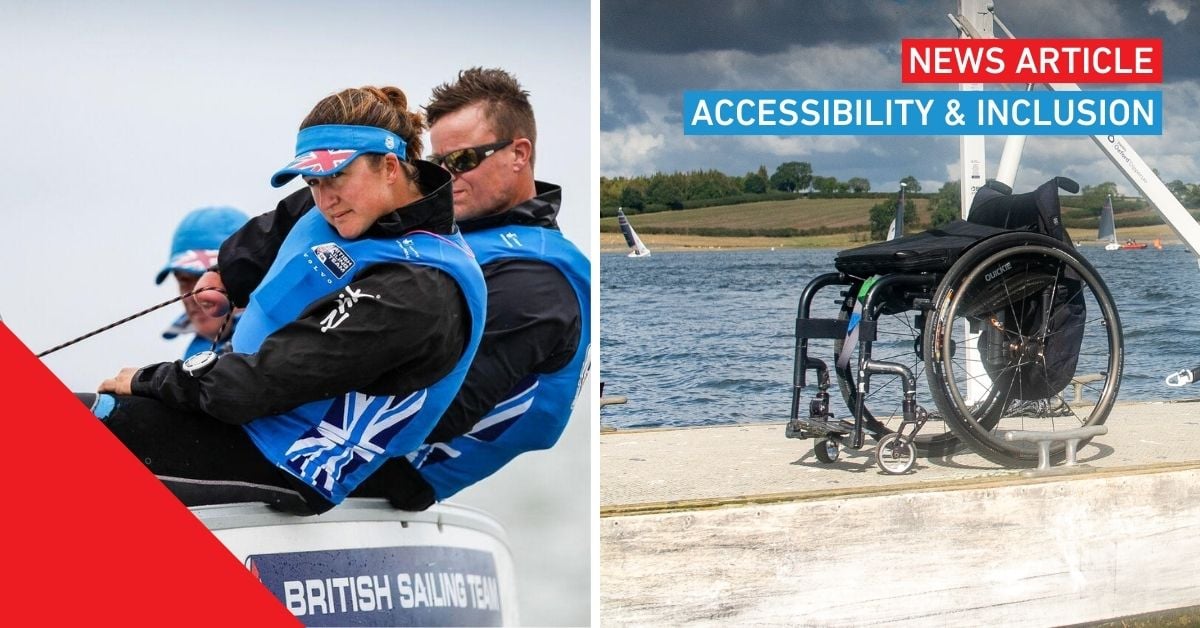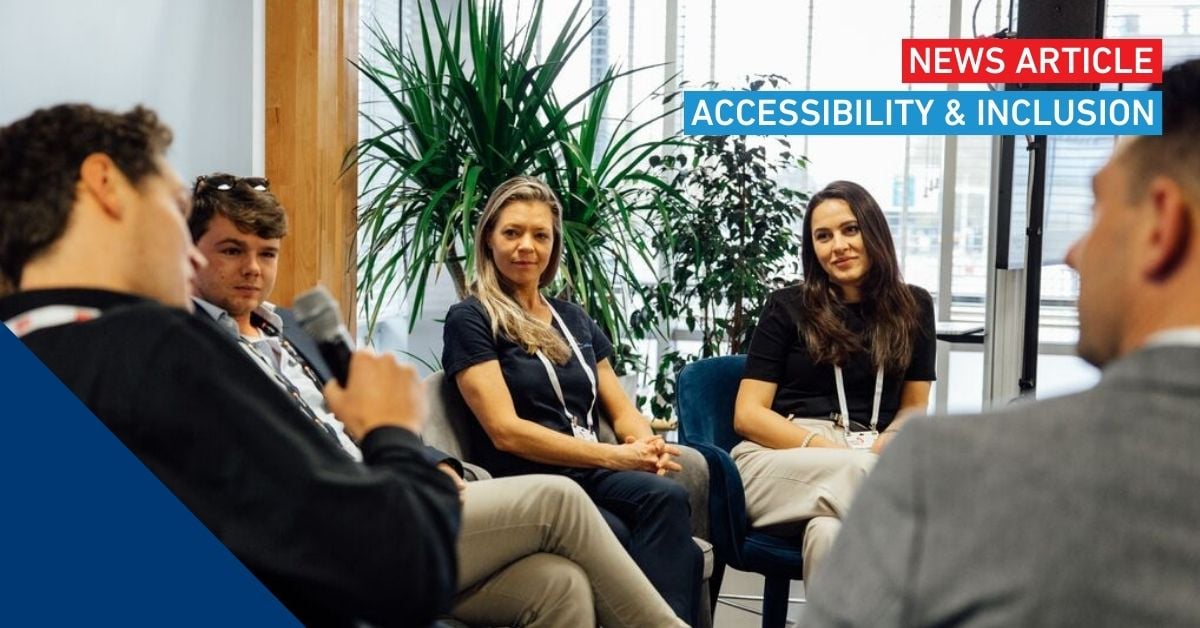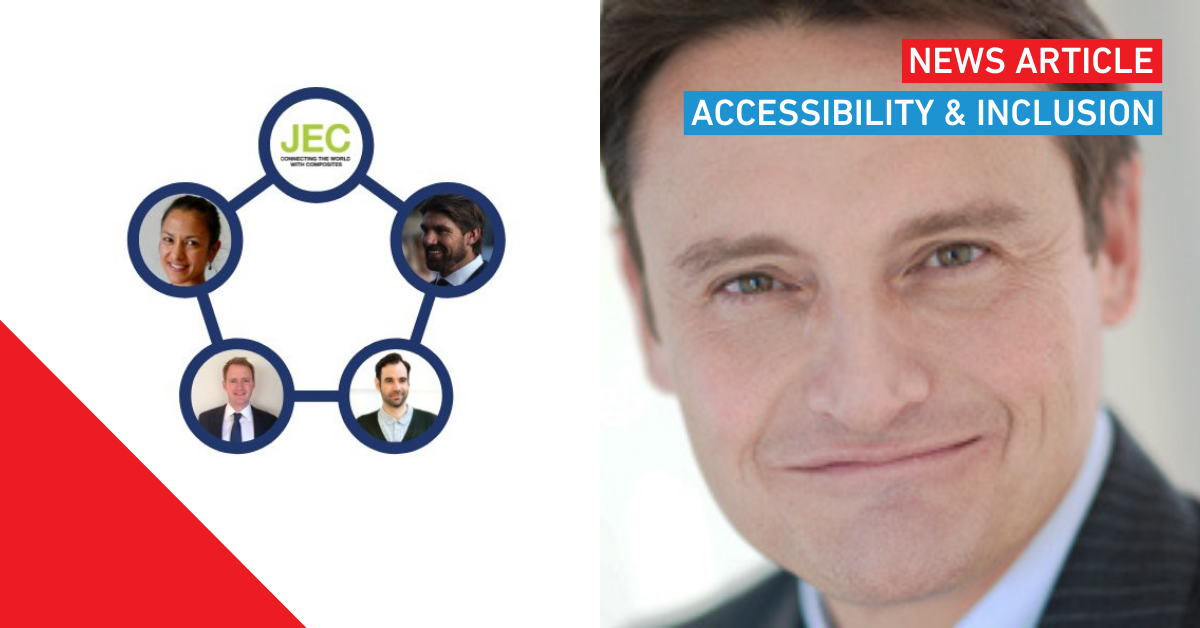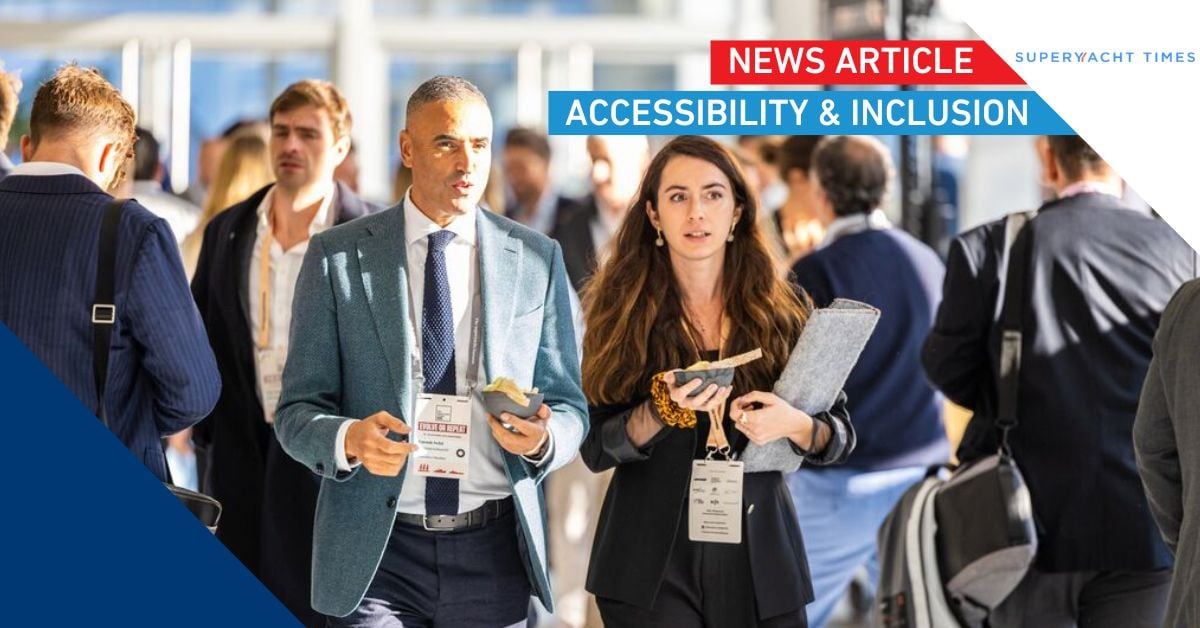Accessibility and InclusionYoung Professionals Club
Maximising the potential for women in the Leisure Marine Industry
Kim Hollamby
Monday, 25 March 2024
Marine industry PR pioneer and Global Women in PR founder Susan Hardwick speaks to Kim Hollamby about her career and the research-informed steps companies should consider to create and retain female leaders in the industry.
If you are looking for informed perspective on equality for women within the marine industry and the wider working world then Susan Hardwick is a very good person to spend an hour with.
Sue’s entry into the recreational marine sector happened as a student when she worked at the London Boat Show for one of the UK’s leading chandlers of the day, Captain OM Watts. After taking time out to travel, she worked as an event organiser specialising in oceanology, pharmaceuticals, and the food industry before travelling again and crewing on a superyacht.
On her return to the UK, Sue took a role with Ladyline, a rapidly growing marine business with an innovative and marketing-savvy owner, Gerry Perry. From its base as a marina operator and boat sales chain, the company opened a series of chandlers and was about to launch an in-house credit card—an initiative well ahead of its time, even in the high street retail scene. After working on the credit card project, Sue moved into the equally innovative world of public relations.
“I was in an unusual position for a female in those days, but I wasn’t aware of how unique a situation it was because it never occurred to me that a woman couldn’t do what I was doing. At university, I had graduated alongside male students on an equal footing, and I came away from that thinking I could choose to do what I wanted to do, unlike my mother, who had been expected to give up a successful career when having children.
With the benefit of hindsight and remembering various comments and experiences, I realised that it wasn’t a level playing field at all in those days. All the other in-house PRs were male then, and I was in a hugely male-dominated industry, with very few women in senior positions.”
Sue was soon learning her craft: “Gerry told me to invite every editor of each of the boating magazines to lunch at the Savoy in London so that I could talk to them about what Ladyline was planning to launch, and it worked. I worked for the company for three years and learned a lot.”
Ladyline expanded, the in-house credit card took off, and the company launched a new franchising model, which was also a new concept. More than 30 branches were opened to serve the booming marine trade. Ladyline was sold and took a new direction which prompted Sue to look for a new role in PR.
After considering various offers, Sue took the plunge and decided to launch her own business – Hardwick Public Relations. The company signed a significant roster of clients, including BMW Marine, Sealine International and IPC Media. After many years of success, Hardwick PR merged with Affinity Consulting part of Porter Novelli Countrywide. Sue continued to work with marine industry clients while adding some well-known global whisky brands and other consumer products. She also ran the Cowes Week press office for several years.
“I ultimately sat on the committee and, a few years later, became president and helped to grow the organisation. We then started to make connections with female PRs in New York.”
Sue subsequently teamed up with another Women in PR leading light, Angela Oakes, to co-found Global Women in PR (GWPR) to connect women’s networks worldwide. They were supported in the early days by the Public Relations and Communications Association’s Director General, Francis Ingham, who secured encouragement from PR trade bodies worldwide. GWPR now has networking groups in Australia, France, Germany, Ghana, India, Italy, MENA, Mexico, Romania, Singapore, and the UK, with more in the pipeline. Each has a networking structure that enables women in senior industry roles to network, meet, be together, and share initiatives.
“The Empower mentoring programme that we started two years ago is unique,” Sue explains. “Mid-career women looking to progress are teamed with some of the industry’s most influential women. Feedback tells us it is invaluable for both the mentees and the mentors.
“For the past five years, we have also researched and published an Annual Index that measures some of the issues and challenges facing women working in our industry, such as flexible working, harassment, better gender balance at the board level and ageism. The gender equality dial has changed in some respects, but if you look at the number of women over 50 still working in the PR sector, there are very few, which means there’s a lack of role models, too. Other industries, such as marine, are most likely facing similar challenges.”
“Another issue that GWPR research highlights is the need for workplace flexibility to be an accepted norm. Women are usually still the primary carers for children and elderly relatives. We’ve found that not many males take paternity leave except in one country, Sweden, where some companies have been experiencing trouble recruiting men because the opposite applies. However, globally, the issues are remarkably similar.
“Whatever industry you work in, it’s got to start with encouragement. Just look at what is happening in women’s football now. Not so many years ago, UK women could not participate in this sport competitively. Now, we see how normal it is, and little girls look at televised games thinking they can do that.
“There were always successful women working in the marine industry when I was involved, but it was the exception rather than the rule. Things have undoubtedly changed, but it is important for more of the next generations of women to see the potential of a marine career. We have learned at GWPR that you often need to create a better balance for women to thrive and recognise the necessary things to encourage the development of female leaders. We need to make it easier for women to juggle domestic issues alongside working. Maximising the talent of women within the workplace is good for business and for enterprise.”
To join the Women In The Marine Industry International LinkedIn group organised by British Marine, Soundings Trade Only, Metstrade and Marine Industry News visit linkedin.com/company/women-in-the-marine-industry/
If you are looking for informed perspective on equality for women within the marine industry and the wider working world then Susan Hardwick is a very good person to spend an hour with.
Sue’s entry into the recreational marine sector happened as a student when she worked at the London Boat Show for one of the UK’s leading chandlers of the day, Captain OM Watts. After taking time out to travel, she worked as an event organiser specialising in oceanology, pharmaceuticals, and the food industry before travelling again and crewing on a superyacht.
On her return to the UK, Sue took a role with Ladyline, a rapidly growing marine business with an innovative and marketing-savvy owner, Gerry Perry. From its base as a marina operator and boat sales chain, the company opened a series of chandlers and was about to launch an in-house credit card—an initiative well ahead of its time, even in the high street retail scene. After working on the credit card project, Sue moved into the equally innovative world of public relations.
First steps in PR
“PR was an emerging discipline,” Sue recalls. “Gerry planned to recruit a man but then read in the Financial Times newspaper that the best PR people were female graduates aged 25. I was female, a graduate, and 24, so I almost ticked all the boxes. He offered me flexible working, another innovation in that era, so I could continue living in London rather than relocating 260km away. He also agreed I could make frequent overseas trips to assist with procurement and learn about the business and its products. There was a lot of trust involved.“I was in an unusual position for a female in those days, but I wasn’t aware of how unique a situation it was because it never occurred to me that a woman couldn’t do what I was doing. At university, I had graduated alongside male students on an equal footing, and I came away from that thinking I could choose to do what I wanted to do, unlike my mother, who had been expected to give up a successful career when having children.
With the benefit of hindsight and remembering various comments and experiences, I realised that it wasn’t a level playing field at all in those days. All the other in-house PRs were male then, and I was in a hugely male-dominated industry, with very few women in senior positions.”
Sue was soon learning her craft: “Gerry told me to invite every editor of each of the boating magazines to lunch at the Savoy in London so that I could talk to them about what Ladyline was planning to launch, and it worked. I worked for the company for three years and learned a lot.”
Ladyline expanded, the in-house credit card took off, and the company launched a new franchising model, which was also a new concept. More than 30 branches were opened to serve the booming marine trade. Ladyline was sold and took a new direction which prompted Sue to look for a new role in PR.
After considering various offers, Sue took the plunge and decided to launch her own business – Hardwick Public Relations. The company signed a significant roster of clients, including BMW Marine, Sealine International and IPC Media. After many years of success, Hardwick PR merged with Affinity Consulting part of Porter Novelli Countrywide. Sue continued to work with marine industry clients while adding some well-known global whisky brands and other consumer products. She also ran the Cowes Week press office for several years.
Championing women in business
During that time, Sue first got involved with organisations that seek to connect, champion and support women within business: “An invitation arrived to join as a member of a UK organisation called Women in PR, which helps women in business to learn from each other. It was very supportive and an incredible environment in which to flourish. There were events every few weeks where you’d always meet somebody new and learn that some of the issues we faced were common.“I ultimately sat on the committee and, a few years later, became president and helped to grow the organisation. We then started to make connections with female PRs in New York.”
Sue subsequently teamed up with another Women in PR leading light, Angela Oakes, to co-found Global Women in PR (GWPR) to connect women’s networks worldwide. They were supported in the early days by the Public Relations and Communications Association’s Director General, Francis Ingham, who secured encouragement from PR trade bodies worldwide. GWPR now has networking groups in Australia, France, Germany, Ghana, India, Italy, MENA, Mexico, Romania, Singapore, and the UK, with more in the pipeline. Each has a networking structure that enables women in senior industry roles to network, meet, be together, and share initiatives.
“The Empower mentoring programme that we started two years ago is unique,” Sue explains. “Mid-career women looking to progress are teamed with some of the industry’s most influential women. Feedback tells us it is invaluable for both the mentees and the mentors.
“For the past five years, we have also researched and published an Annual Index that measures some of the issues and challenges facing women working in our industry, such as flexible working, harassment, better gender balance at the board level and ageism. The gender equality dial has changed in some respects, but if you look at the number of women over 50 still working in the PR sector, there are very few, which means there’s a lack of role models, too. Other industries, such as marine, are most likely facing similar challenges.”
The power of diversity in the workplace
Sue continues: “We need to encourage women in their 20s and 30s to think they can be in a lifelong career and, by doing so, retain their talent. A strong business argument, backed by research, suggests a balanced boardroom leads to a more profitable business. Men and women each bring different thinking, analytics, emotions, and perspectives to the table, which is a good thing. We should celebrate and embrace those differences.“Another issue that GWPR research highlights is the need for workplace flexibility to be an accepted norm. Women are usually still the primary carers for children and elderly relatives. We’ve found that not many males take paternity leave except in one country, Sweden, where some companies have been experiencing trouble recruiting men because the opposite applies. However, globally, the issues are remarkably similar.
“Whatever industry you work in, it’s got to start with encouragement. Just look at what is happening in women’s football now. Not so many years ago, UK women could not participate in this sport competitively. Now, we see how normal it is, and little girls look at televised games thinking they can do that.
“There were always successful women working in the marine industry when I was involved, but it was the exception rather than the rule. Things have undoubtedly changed, but it is important for more of the next generations of women to see the potential of a marine career. We have learned at GWPR that you often need to create a better balance for women to thrive and recognise the necessary things to encourage the development of female leaders. We need to make it easier for women to juggle domestic issues alongside working. Maximising the talent of women within the workplace is good for business and for enterprise.”
Further information
To learn more about Global Women in PR visit globalwpr.com and to read more about the GWPR Annual Index visit globalwpr.com/annual-index/To join the Women In The Marine Industry International LinkedIn group organised by British Marine, Soundings Trade Only, Metstrade and Marine Industry News visit linkedin.com/company/women-in-the-marine-industry/
Receive our newsletter - straight to your inbox!




